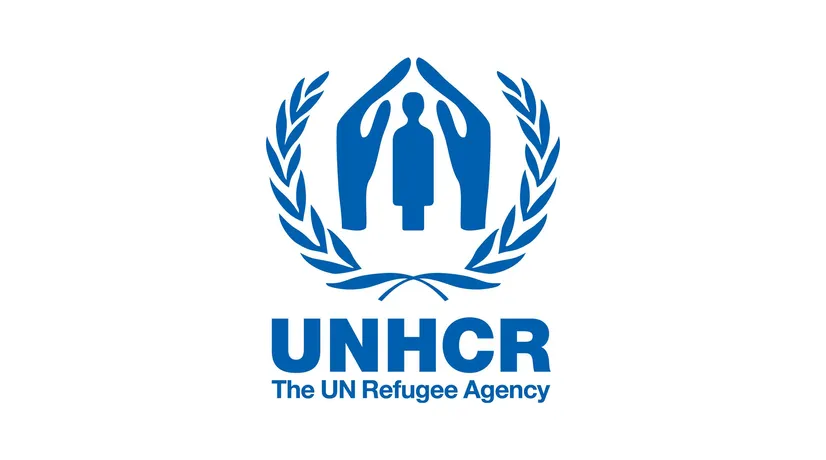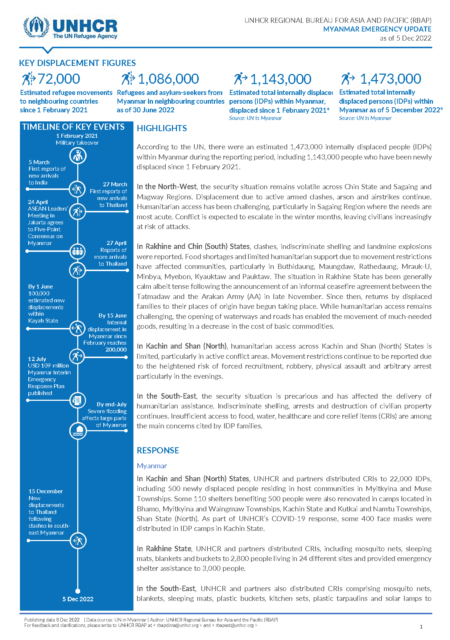Myanmar Emergency Update (as of 5 December 2022)
08 December 2022

KEY DISPLACEMENT FIGURES
72,000 Estimated refugee movements to neighbouring countries since 1 February 2021
1,086,000 Refugees and asylum-seekers from Myanmar in neighbouring countries as of 30 June 2022
1,143,000 Estimated total internally displaced persons (IDPs) within Myanmar, displaced since 1 February 2021* Source: UN in Myanmar
1,473,000 Estimated total internally displaced persons (IDPs) within Myanmar as of 5 December 2022* Source: UN in Myanmar
HIGHLIGHTS
According to the UN, there were an estimated 1,473,000 internally displaced people (IDPs) within Myanmar during the reporting period, including 1,143,000 people who have been newly displaced since 1 February 2021.
In the North-West, the security situation remains volatile across Chin State and Sagaing and Magway Regions. Displacement due to active armed clashes, arson and airstrikes continue.
Humanitarian access has been challenging, particularly in Sagaing Region where the needs are most acute. Conflict is expected to escalate in the winter months, leaving civilians increasingly at risk of attacks.
In Rakhine and Chin (South) States, clashes, indiscriminate shelling and landmine explosions were reported. Food shortages and limited humanitarian support due to movement restrictions have affected communities, particularly in Buthidaung, Maungdaw, Rathedaung, Mrauk-U, Minbya, Myebon, Kyauktaw and Pauktaw. The situation in Rakhine State has been generally calm albeit tense following the announcement of an informal ceasefire agreement between the Tatmadaw and the Arakan Army (AA) in late November. Since then, returns by displaced families to their places of origin have begun taking place. While humanitarian access remains challenging, the opening of waterways and roads has enabled the movement of much-needed goods, resulting in a decrease in the cost of basic commodities.
In Kachin and Shan (North), humanitarian access across Kachin and Shan (North) States is limited, particularly in active conflict areas. Movement restrictions continue to be reported due to the heightened risk of forced recruitment, robbery, physical assault and arbitrary arrest particularly in the evenings.
In the South-East, the security situation is precarious and has affected the delivery of humanitarian assistance. Indiscriminate shelling, arrests and destruction of civilian property continues. Insufficient access to food, water, healthcare and core relief items (CRIs) are among the main concerns cited by IDP families.
Announcements
21 May 2025
Open letter: Malaysia must lead ASEAN with principle, not hypocrisy, to address the Myanmar crisis

Progressive Voice is a participatory rights-based policy research and advocacy organization rooted in civil society, that maintains strong networks and relationships with grassroots organizations and community-based organizations throughout Myanmar. It acts as a bridge to the international community and international policymakers by amplifying voices from the ground, and advocating for a rights-based policy narrative.
